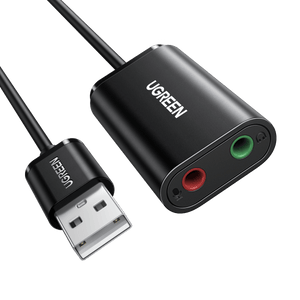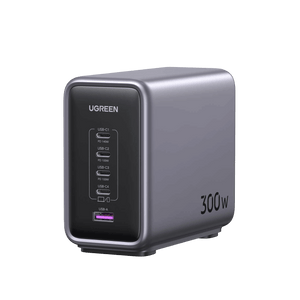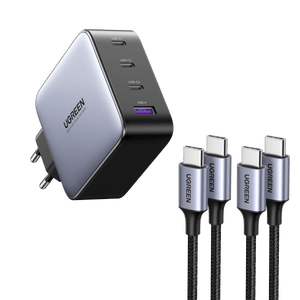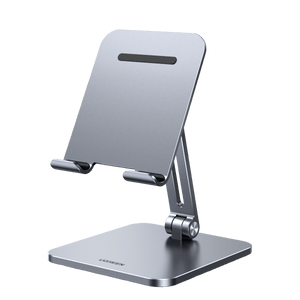Power Banks
UGREEN MagFlow Magnetic Wireless Power Bank (10000mAh, Qi2 25W, MagSafe-compatible)
UGREEN Nexode Power Bank 20000mAh 165W with Retractable USB-C Cable
UGREEN Nexode Power Bank 20000mAh 130W
UGREEN Nexode Power Bank 25000mAh 200W with Smart Digital Display
UGREEN Nexode Power Bank 12000mAh 100W
UGREEN 300W 48000mAh Portable Charger Power Bank
UGREEN Nexode Power Bank 20000mAh 145W
UGREEN Wireless Magnetic Power Bank 10000mAh
Ugreen 145W powerbank voor laptop-3-poorts powerbank | 25000 mAh
UGREEN Nexode Power Bank 20000mAh 100W
UGREEN Wireless Magnetic Power Bank 5000mAh
UGREEN MagFlow Magnetic Wireless Power Bank 20000mAh 45W (MagSafe compatible)
FAQ About Power Bank & Portable Charger
What are the functions or uses of a power bank?
A power bank, alternatively referred to as a portable charger or an external battery pack, serves as a mobile device capable of storing electrical energy. It is designed to recharge electronic devices, including smartphones, tablets, laptops, and other gadgets, in instances where they lose their battery charge. These power banks often feature lithium-ion batteries and offer a range of capacities, sizes, and shapes to cater to varying requirements. They are particularly useful for charging devices on the move, especially in scenarios where access to power outlets is limited.
Could you explain the significance of mAh in the context of a power bank or portable charger?
mAh, short for milliampere-hour, serves as a metric indicating the energy capacity of a battery. Put simply, it represents how much charge a battery can store. Consequently, a higher mAh rating suggests that your device can remain charged for a longer duration before requiring recharging.
How can I make a wise selection of a high-quality power bank?
Here are a few key factors to consider when selecting a high-quality power bank:
1. Capacity: Choose a power bank with ample capacity to recharge your devices multiple times. Higher capacity often translates to more charging cycles. Common capacities you might encounter are 5000mAh, 10000mAh, 20000mAh, and 25000mAh.
2. Charging Speed: Ensure the power bank has sufficient output power to support rapid charging for your devices. Higher output power generally leads to faster charging times.
3. Port Compatibility: Select a power bank with charging ports that are compatible with your devices, such as USB-A or USB-C.
4. Safety Measures: Look for a power bank that incorporates safety features like overcharge protection, over-discharge protection, and short circuit prevention to guarantee safe and reliable charging for your devices.
How can I power up my power bank or portable charger?
The process of charging a power bank is quite simple. First, attach the charging cable to the power bank, and then connect the other end of the cable to a power adapter or a USB port on a computer. Allow the power bank to charge for a while until it reaches full capacity. Once charged, simply disconnect the charging cable, and your portable charger is prepared for use.
What is the recommended capacity of a power bank that I should get?
Determining the appropriate capacity for a power bank depends on the number and types of devices you plan to charge. For instance, if you're only charging a smartphone, a power bank with a capacity ranging from 5000mAh to 10000mAh is generally sufficient. However, if you frequently charge multiple devices or larger electronics such as tablets or laptops, it's advisable to opt for a power bank with a capacity of 20000mAh or higher.
How is the durability or lifespan of a portable power bank?
The duration of a portable power bank's serviceability varies based on its quality, how often it's used, and how well it's maintained. Typically, top-tier power banks can endure for 3 to 5 years, whereas less robust models might last for only 1 to 2 years. Engaging in best practices such as preventing overcharging or discharging, regular recharging, and keeping it away from extreme temperatures can help prolong the lifespan of a power bank.
Is it allowed to carry a power bank on a plane, and are there limitations regarding its capacity?
Taking a power bank on a flight is possible, but certain regulations should be observed. Majority of airlines permit them in hand luggage, not in checked baggage.
Moreover, aviation authorities impose limitations on the capacity of power banks. Commonly, those with a capacity of 100Wh or less are allowed on board without prior authorization. Power banks with a capacity ranging from 100Wh to 160Wh may be permitted with the airline's approval, whereas those exceeding 160Wh are typically not allowed.
To ensure compliance and a hassle-free journey, it's advisable to consult your airline and refer to their specific regulations pertaining to power bank capacity and usage during air travel.
How does a power bank differ from a charger, and what is the most suitable option for my requirements?
The distinction between a power bank and a charger resides in their varying functionalities and application scenarios. A charger directly connects to a power outlet, efficiently providing energy to recharge your devices. It's suitable for scenarios where a power source is accessible and rapid or multiple charging is required.
In contrast, a power bank is a portable device that stores electrical energy, enabling you to charge devices without a direct power source. It's ideal for scenarios like travel, outdoor activities, or any time you're away from a power outlet. Ultimately, the choice between a power bank and a charger hinges on your specific requirements and usage habits.
What steps should I take to maintain my portable charger effectively for a prolonged lifespan?
To guarantee a lengthy lifespan for your portable charger, follow these maintenance recommendations:
1. Shield it from excessively high or low temperatures.
2. Adhere to the bundled cables and adapters to prevent any incompatibility problems.
3. Maintain a regular charge-discharge cycle to uphold battery vitality.
4. When not in use, store it in a temperature-controlled, dry environment.
5. Steer clear of overcharging or fully depleting the battery.
6. If storing for a prolonged period, charge it to approximately 50% capacity and then put it away.
7. Think about using a surge protector while charging to safeguard against power fluctuations.
8. Keep it tidy and dust-free.
Does regular use of a portable charger have a negative impact on my device's battery health?
Regular use of a portable charger doesn't typically pose a threat to your device's battery. However, to mitigate potential risks, it's crucial to select a reputable charger and adhere to recommended charging guidelines. Prolonged overcharging or employing a substandard charger can deteriorate the battery's health over time. Furthermore, refrain from exposing your device to extreme heat during charging sessions. By employing a trusted charger and adhering to proper handling, you can ensure the longevity of your device's battery.













































